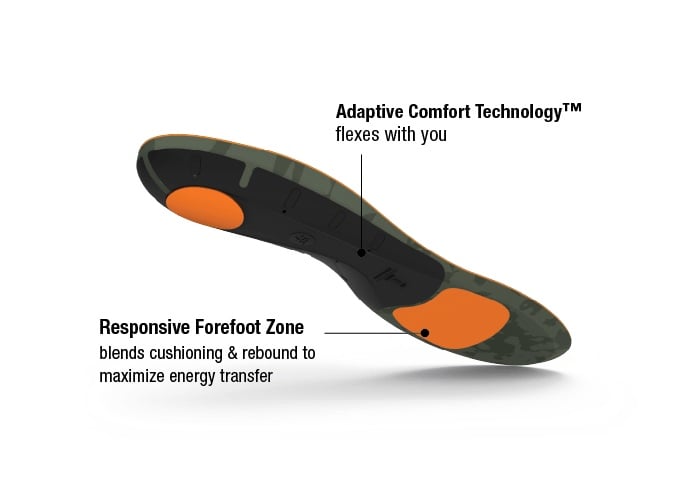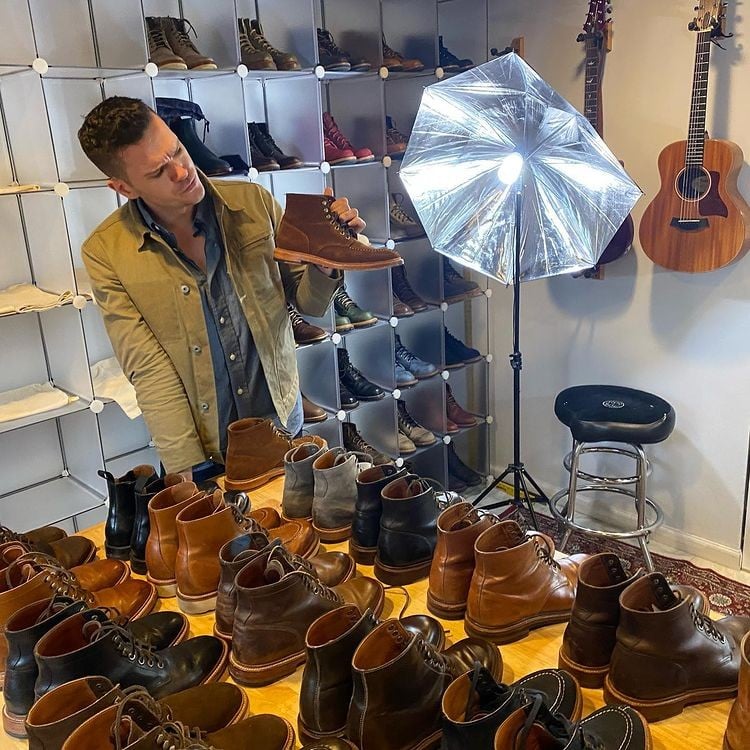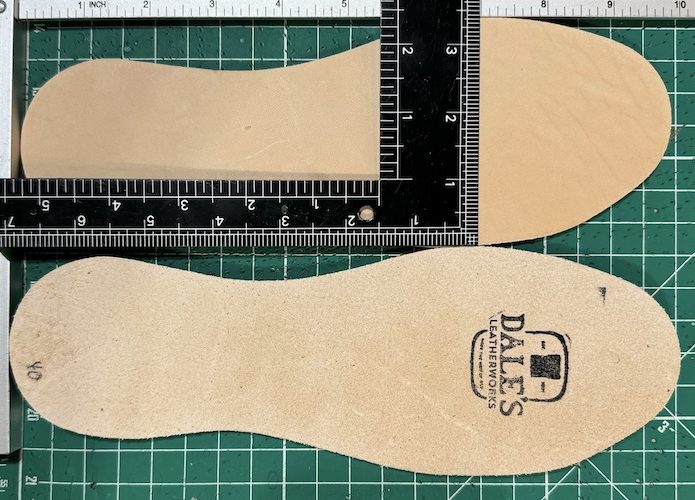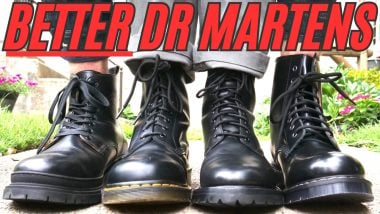How You Know Your Boots Are Too Big (And 3 Tips to Fix ‘Em)

Expert Verified By: Dale Basista, Shoemaker & Men’s Style Expert
When it comes to boots, fit is everything. Boots that are too big can cause more problems than you think: blisters and discomfort, sure, but they also up the risk of ankle injuries and chronic foot pain, because your foot muscles need to work harder as they slide around.
And because boots have a higher shaft than shoes, it’s easier to get a pair that don’t secure your ankle that well.
So, how can you tell if your boots are too big, and what can you do to fix it? In this article, we’ll explore some common signs that your boots may be too big and offer some solutions, some of which cost under ten bucks.
How To Make Big Boots Fit Better: 3 Simple Steps
What if you’ve got your boots and can’t return them, and need a remedy? Don’t despair, you have some options that have worked for me, a guy who has owned over a hundred boots, many times.

1. Add a tongue pad
The good folks at Grant Stone put me onto this tip. Especially when it comes to laceless footwear like Chelsea boots and loafers, the fit actually has a lot more to do with your instep — the top of your foot near where it meets the ankle — than with your heel or your width.
On multiple pairs of boots and loafers, simply sticking Pedag’s patch of vegetable tanned suede under the tongue made heel slip vanish. It’s amazingly effective and very cheap.
Whether it's boots or loafers, these inexpensive pads simply fill space on the instep, but you'll be amazed how effective they are for fixing heel slip.

2. Add an insole
There are really just two reliable ways to fix a too-big boot: tongue pads are the cheapest, but the next option is to add an insole to your boots. The simple reason is that it takes up extra space, and it does so evenly across the boot.
Dale’s Leatherworks is a small outfit in Maryland run by an obsessive YouTuber and leatherworker. Not only is this the best price we’ve found for veg tan leather insoles, but they also have the most precise sizing: they’re cut to the half size and are available in three different thicknesses for different levels of sizing disparity. Dale recommends a thin one to eat up half a size and a medium one for a whole size.
“Even though they sell very well, I rarely recommend the thick insoles because if you’re in the situation where you need one, your boots are massively oversized,” he told us.
Note that Dale also sells half insoles, also known as “heel seats,” for when you just need a heel raise.
Offering three different thicknesses and even half insoles, these are the best value and most thoughtfully made insoles on the market.
3. Wear thicker socks
We’re getting more low tech here, but if your boot is off by just half a size or so, getting nice, thick socks fixes the issue well enough. (This was the case with my Alden Indys.) Look for socks made of wool or synthetic materials, which are thick and cushiony.
These "full cushion" boot socks are a great way to fill extra room in a boot or just give you more warmth and support than you've ever had — the lifetime warranty is what pushed this into our category of favorites.
4. Use a heel grip (Maybe)
A heel grip is a thin strip of material that you can place in the heel of your boots to help keep your foot in place. This helps to prevent your foot from slipping around inside the boot and causing blisters, but this solution will mostly work if the issue is that the inside heel of your boot is too smooth. It’s not a great fix for sizing problems.
These inserts are specifically designed for boots and shoes that are too big in order to protect your heels.

A Bad Solution for Boots That Are Too Big
I’ll be real with you guys: there are a lot of myths about how to make big boots fit better and I’m ashamed to say I’ve promoted them before in a video or two on my YouTube channel — but I delisted them once I learned the truth about these.
Shoe Fillers
Pieces of foam that look like this. The idea is to jam them up against the toebox or heel of your boots to fill the extra space. But your arch will be in the wrong place, your toes will mash up against them as you walk, they do nothing for the more important instep problem mentioned above, and they don’t last a long time.

The Best Boot Insoles for Too Big Boots
Winner of the 2022 Men's Health Outdoor Award for Best Insoles, these comfy orthotics disperse impact and flex and adapt to your foot's natural motion.
We just listed a series of tips for too-big boots, but the first and last thing most guys will tell you to do is to buy an insole. A good insole handily fills up the space inside the boot, and it’s typically less of a hassle to just grab one online than it is to find a cobbler or a boot stretcher.
We recommended Dale’s Leatherworks for a simple vegetable tanned leather insole. If you want something a little more ergonomic or high tech, you quickly realize that it’s a gigantic industry with a billion different products for hiking, walking, athletics, foot pain, office shoes, skates, and more.
But just one has won an award from Men’s Health for their performance and all-day support, and that’s the Adapt Hike Max. With flexible, cushioned support, they adapt to your foot’s natural motion to prevent sore feet.
Want something a tad harder underfoot that’s a little closer to a leather insole? Try the Copper Memory Foam, which is more adapted to walking than for harder work.
[Related: The 12 Best Insoles for Work Boots]
How Should Boots Fit?
When it comes to boots, fit is crucial. Boots that don’t fit properly can cause a range of problems, including blisters, foot pain, and even tripping and falling. Here are a few tips for determining if your shoes fit properly:
1. Learn your actual shoe size
First, go to a shoe store and pretend you’re going to buy shoes so you can get your actual foot size measured on a Brannock device. A lot of guys we speak to have never done this and simply think their sneaker size is their shoe size. (And they always say the biggest size they’ve ever worn, of course.)
Find out your Brannock size. Note that, according to the video above, most boots require you to size down a half size from your Brannock size. Be sure to read the sizing instructions on the company’s website closely.

2. Measure your feet
Some shoemakers like to joke that even a brick has a Brannock size — but that doesn’t mean it fits a shoe. The point is: your feet are three-dimensional, and a simple Brannock size doesn’t tell the whole story.
By actually measuring your feet and sharing those details with the brand, you can uncover important fit factors, like if your feet are the same size or if they are different sizes, if you have a low instep, or if you have narrow ankles. Any of these can affect how a “true-to-size” boot actually feels on your foot.
Speaking from experience, I’ve dealt with all three issues and spent years figuring them out. Don’t make the same mistake — use the guide above to measure your feet properly and compare your results to Brannock sizing.

3. Check the flex point
This is one of the most overlooked aspects of boot fit: the boot should bend where your foot naturally bends — at the ball of the foot, not the midfoot. Boots are designed to flex, but if they break in the wrong spot, it can cause a host of problems. Your foot may slide around, the leather might rub uncomfortably, and your toes could get pinched.
To test it, walk around in the boots before buying. Make sure the widest part of the boot lines up with the widest part of your foot — the ball. If it doesn’t, the flex point will be off, and the fit will never feel quite right.
4. Check the fit in the heel
The heel of your boot should fit snugly, without slipping up and down as you walk. If your heel lifts with each step, the boot is likely too big.
That said, a small amount of heel slippage can be normal, especially in well-made leather boots. Over time, the heat and friction from your foot will soften the leather and help it mold to your heel. Still, it’s best to aim for a fit with minimal or no slippage from the start, just to be safe.
5. Consider the width
Shoes that are too narrow or too wide can be uncomfortable and cause problems. Make sure the width of the shoe fits your foot properly and is not too tight or too loose.
Note that conventional wisdom states that shoes will stretch in the width, but not in the length. If your toes hit the end of a too-small shoe or boot, you’re in trouble. Widthwise, they will stretch, but only by a millimeter or two.
6. Don’t worry too much about room in the toe
If the heel and the width are fine, it’s largely irrelevant if there is or isn’t a lot of space between your toes and the end of the boot. The most important thing is that your toes don’t feel pinched or smushed together — that can be a problem.
Overall, shoes that fit properly should feel comfortable and secure on your feet, and should not cause any discomfort or problems when you walk.

Wrapping Up
By following the tips outlined in this article, you can determine if your shoes are too big and take steps to find a better fit.
Whether you are shopping for new shoes or trying to determine if your current pair is the right size, these tips can help you find comfortable and stylish footwear that meets your needs. Don’t compromise your comfort or your health by wearing shoes that are too big or too small. With a little effort, you can find the perfect fit and enjoy all the benefits of well-fitting shoes.
Wearing a shoe that is too big can cause blisters and foot pain. If you can’t return them, buy some tongue pads or a new insole to help with the issue.
A half-size represents a ⅛” difference. It may not seem significant, but it is enough to distinguish between comfort and discomfort. If your new boots are half a size too large, it’s not too difficult to remedy this with thicker socks or, if necessary, an insole.
If you feel your foot sliding around inside the shoe or your heel slipping, the shoe is too big, and you’ll need a tighter fit.
Wearing boots that are too big can lead to a range of issues. Your feet may slide around, causing friction that can lead to blisters and foot pain.
The extra space can also throw off your balance and proprioception, making you more likely to trip or stumble. This is especially important with work boots and hiking boots.
On top of that, oversized boots don’t offer proper support, which can result in fatigue and discomfort, particularly for those with flat feet or existing foot problems.














